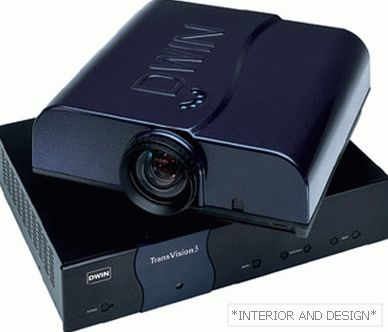Niki de Saint Phalle - the epitome of the disco era. The model that became an artist, an aristocrat who was able to do everything herself, a fragile beauty who shot from a rifle and succeeded in monumental sculpture, de Saint-Fall (1930-2002) still inspires visuals.
Related: Rick Owens and Hugo Rondinone at Versailles
The most famous woman in the artistic environment of the 1960-70s, Niki came into art by sheer chance. The daughter of a French duke and a rich American woman, she did not need money for a long time. She grew up in a castle, studied in a private school, worked as a model, at eighteen her portraits decorated the covers of Vogue. She married a young man from her midst. But the parents of her chosen one, Harry Mathews, the Protestants, did not approve of the marriage with the Catholic, depriving the son of the content.
 Niki de Saint Phalle. Cover Vogue, Paris. 1952
Niki de Saint Phalle. Cover Vogue, Paris. 1952 “As a child, I decided that I would become a hero. But by whom? George Sand? Joan of Arc? Or Napoleon in a skirt? The main thing is to grow up a strong, complex and bright personality. ”
The newlyweds were forced to live in misery and even hunted down petty thefts: they stole food and books. Matthews considered himself a writer, Nicky decided to devote himself to the theater. They moved to Paris and began to rotate in a bohemian environment. When Nicky, 20, suffered a nervous breakdown and the doctors diagnosed schizophrenia, her husband placed her in a psychiatric hospital, where, along with an electric shock, she was prescribed art therapy.
The first works of the self-taught artist were expressive collages collected from everything that came to hand: wires, fallen leaves from the hospital garden. On top of them, Niki was spraying paint. The collages were replaced by a series of assemblages - a mess of scissors, torn children toys, skeins of thread, which a pretty girl ... shot with a gun, inviting viewers to join her. To the objects collected in a single composition on canvas, attached bags of paint. Battered by a bullet, they burst, the paint spread all over the canvas. Subsequently, art critics will call the work of Nika one of the first performances in the history of art. The series was named Tirs ("Tire") and brought it fame.
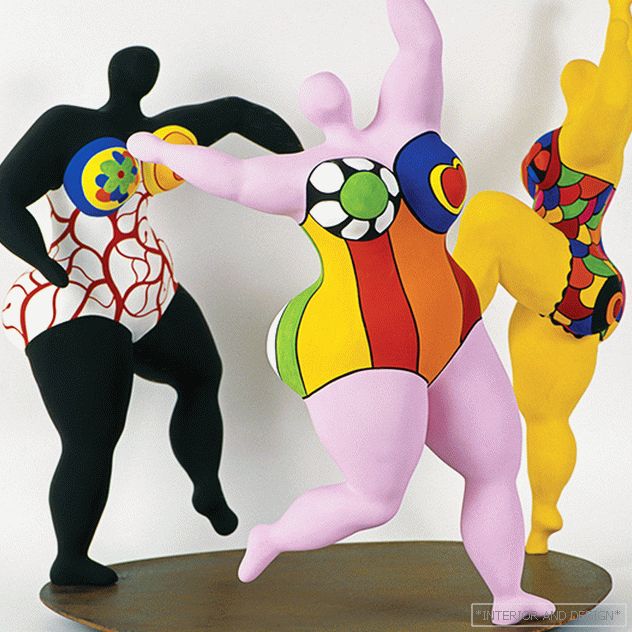 Niki de Saint Phalle. Les Trois Graces. 1994
Niki de Saint Phalle. Les Trois Graces. 1994 Niki said that her era breathes war, aggression and cruelty. She broke with the family hearth, symbolically destroying everything that had to do with everyday life. Coming out of the hospital, she, at the age of 25, abruptly changed her life: left her husband, abandoned her children, having decided that family and creativity were incompatible. And gave way out to her dismay. In the early 1980s, the autobiography of the artist was published, in which Nicky described her childhood with a sadistic mother and a pedophile father, abuse and torture of a brother and sister who committed suicide. Niki admitted that art saved her from that spiritual hell in which she lived for many years.
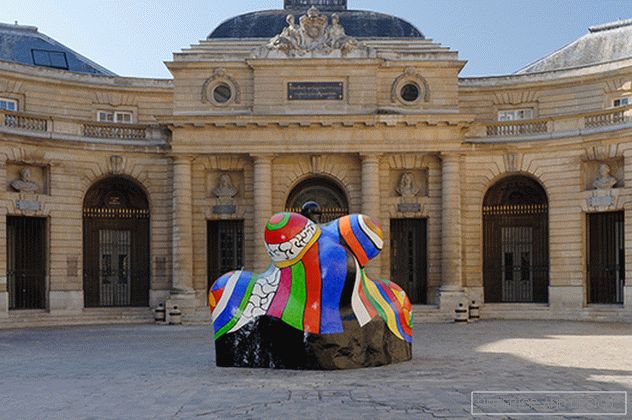 Niki de Saint-Fall (Niki de Saint Phalle). Nana-Maison II. 1966-1987
Niki de Saint-Fall (Niki de Saint Phalle). Nana-Maison II. 1966-1987 
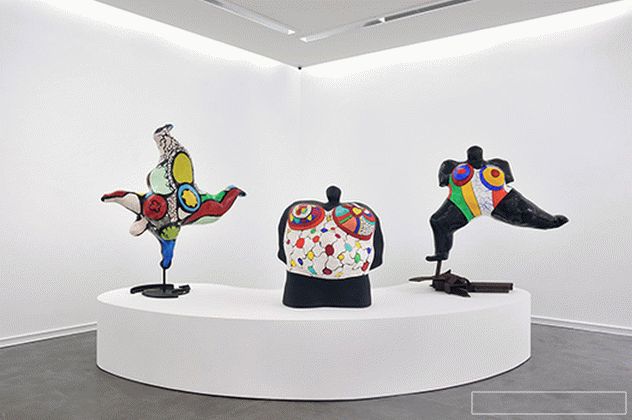
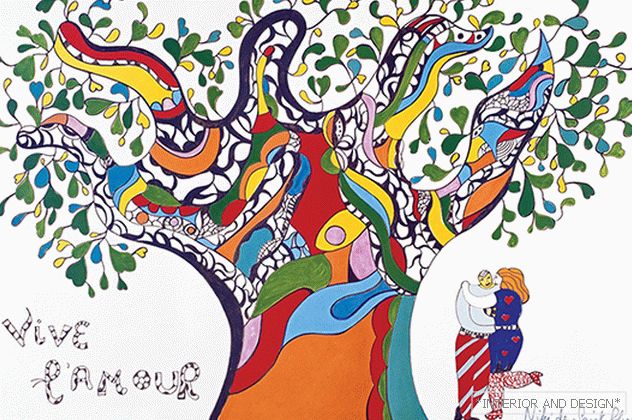
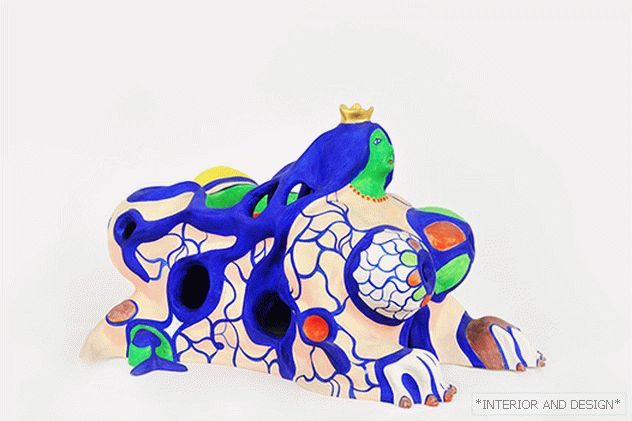
The most famous works of de Saint-Fall are the sculptures of Nanas, the naive female figures “Nana” with lush hips and hypertrophied breasts, similar to ancient totems. From small to giant, in flying poses, bouncing, dancing, painted in bright colors and decorated with mosaics and mirrors, nans are in many cities of the world, in the form of street sculpture, as part of the urban landscape, and in museum collections and private collections. Translated from French, Nanas means neglect of a woman, like a wench. Niki zealously defended the right of a woman to be herself and go through life on a par with a man. At the dawn of the feminist movement of the 1960s, her work hit the mark.
 Niki de Saint-Phalle. Hon Moderna Museet Stockholm. 1966
Niki de Saint-Phalle. Hon Moderna Museet Stockholm. 1966 The sculptor made the biggest “Nana” for the exhibition in the Stockholm Museum of Modern Art. The work was called Hoh and was a giant lying figure, inside which there was a bar and a disco. To get inside, you had to go through the "woman" between the legs. Co-author of this, like many other works of Nika of that period, was made by sculptor Jean Tanguy, her associate and second husband.
 Per Olov Ultvedt, Robert Rauschenberg, Martial Raysse, Daniel Spoerri, Jean Tinguely, Niki de Saint Phalle. 1962
Per Olov Ultvedt, Robert Rauschenberg, Martial Raysse, Daniel Spoerri, Jean Tinguely, Niki de Saint Phalle. 1962 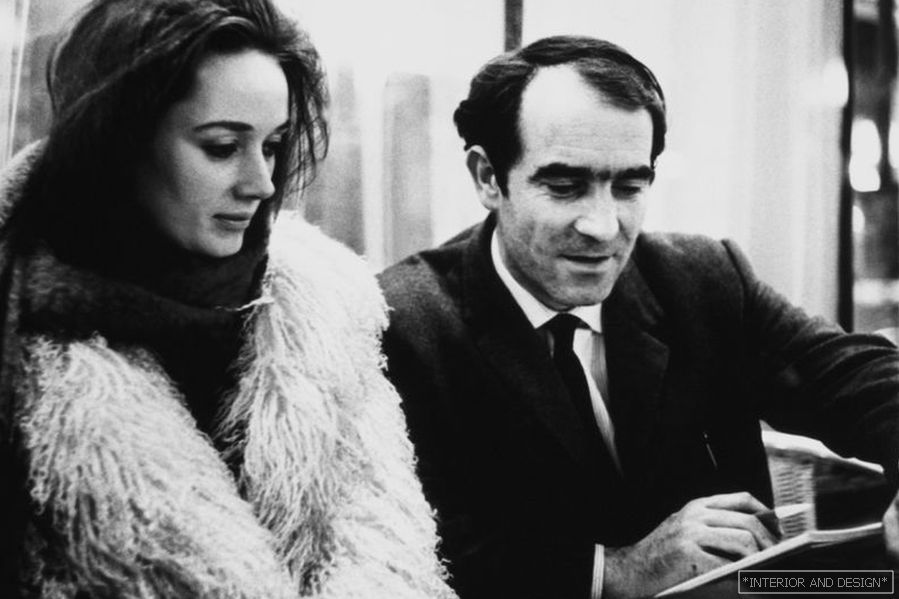 Niki de Saint Phalle, Jean Tinguely. 1960
Niki de Saint Phalle, Jean Tinguely. 1960  Niki de Saint Phalle. Nana Photographer Kurt Wyss. 1985
Niki de Saint Phalle. Nana Photographer Kurt Wyss. 1985 The most ambitious project de Saint Phalle was the Tarot sculpture garden, created in Tuscany. Niki brought to life the long-held dream of her park Guell: the giant sculptures are decorated with mosaics and mirrors in the spirit of Gaudi, painted with multi-colored paints and gilded. The sculpture "Empress" was a living room. Inside was the studio of Niki, she also lived here for several years while construction was underway. "Monsters" - the locals called the fancy sculptures. Indeed, despite the apparent cheerfulness, they frighten, reflecting the strength of the crippled spirit and the imagination of the brilliant self-taught.
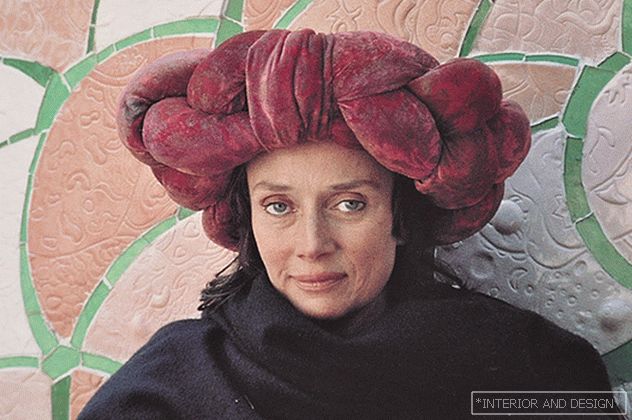
The creation of the garden went all the money and health of Nicky. She died in 2002 from a lung disease caused by harmful dyes, which she used in the process of creating her own colorful objects.

